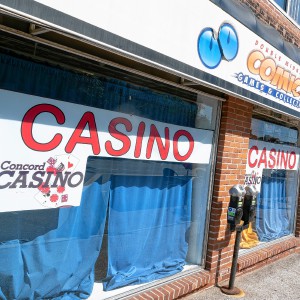The ‘E’ in ‘ESG’
| Published: 05-27-2023 5:00 PM |
A major business movement called “ESG” began several years ago in the United States, the European Union, and globally. I’ve already written about ESG in two columns in this newspaper, in February and April. If you’d like copies of those columns, let me know. But here’s a third.
As you may know, ESG stands for “environmental, social and governmental.” The ESG movement is growing fast despite widely publicized opposition by a small number of politicians, It’s a potentially valuable movement for every business, no matter how small or large — including, of course, New Hampshire businesses.
Businesses that participate in the ESG movement do so by taking all means reasonably available to them to protect the environment and to combat climate change. This is the “E” in ESG;
Many of these businesses pursue social goals (the “S” in ESG) through their commitment to fair labor practices, human rights, and “DEI” — i.e., diversity, equity and inclusion; and
Many pursue ESG goals by their manner of self-government (the “G” in ESG) — for example, by seeking diversity among their directors, officers and employees and by reasonably limiting executive compensation and providing equitable shareholder rights (and, of course, LLC non-manager member rights).
The growth of the ESG movement can result in major public benefits at a national and global level, such as the widespread protection of public health and of access to clean water and air. But it can also bring major private benefits to companies that have ESG commitments and that publicize those commitments among their suppliers, customers and the general public. These benefits can include, importantly, major additional profits from customers who want to buy from ESG companies.
I follow the ESG movement because, as a business lawyer, I’m concerned — and, for the sake of my clients, I have to be concerned — about business ethics. I recently came across a superb online article by Barnes & Thornburg, LLP, a multistate American law firm, entitled “Optimizing the ‘E’ in ESG: Environmental Practices Companies Can Implement to Improve ESG Performance.” The link to the article is lexology.com/library/detail.aspx?g=b76348bc-bad3-44d9-877d-31a308d14656.
Article continues after...
Yesterday's Most Read Articles
 Regal Theater in Concord is closing Thursday
Regal Theater in Concord is closing Thursday
 With less than three months left, Concord Casino hasn’t found a buyer
With less than three months left, Concord Casino hasn’t found a buyer
 Phenix Hall, Christ the King food pantry, rail trail on Concord planning board’s agenda
Phenix Hall, Christ the King food pantry, rail trail on Concord planning board’s agenda
 Former Franklin High assistant principal Bill Athanas is making a gift to his former school
Former Franklin High assistant principal Bill Athanas is making a gift to his former school
 Another Chipotle coming to Concord
Another Chipotle coming to Concord
 Generally speaking, Don Bolduc, now a Pittsfield police officer, has tested himself for years
Generally speaking, Don Bolduc, now a Pittsfield police officer, has tested himself for years
>sbull<The first field is compliance with environmental law and regulations.
>sbull<The second is energy efficiency.
>sbull<The third is the use of to renewable energy sources.
>sbull<The fourth is waste management.
>sbull<The fifth is water conservation.
>sbull<The sixth is sustainable sources of energy and products.
>sbull<The seventh is emissions reduction.
>sbull<The eighth is biodiversity and habitat protection.
>sbull<The ninth is environmental risk management.
>sbull<The tenth is environmental reporting and disclosure.
>sbull<The eleventh is green product design and innovation.
>sbull<The twelfth is circular economy practices.
Many thanks, Barnes & Thornburg, LLP!
John Cunningham is a lawyer licensed to practice law in New Hampshire and Massachusetts. He is of counsel to the law firm of McLane Middleton, P.A. Contact him at 856-7172 or lawjmc@comcast.net. His website is llc199a.com. For access to all of his Law in the Marketplace columns, visit concordmonitor.com.
]]>


 Kearsarge Middle School drone team headed to West Virginia competition
Kearsarge Middle School drone team headed to West Virginia competition Granite Geek: Forest streams are so pretty; too bad they’re such a pain to measure
Granite Geek: Forest streams are so pretty; too bad they’re such a pain to measure
